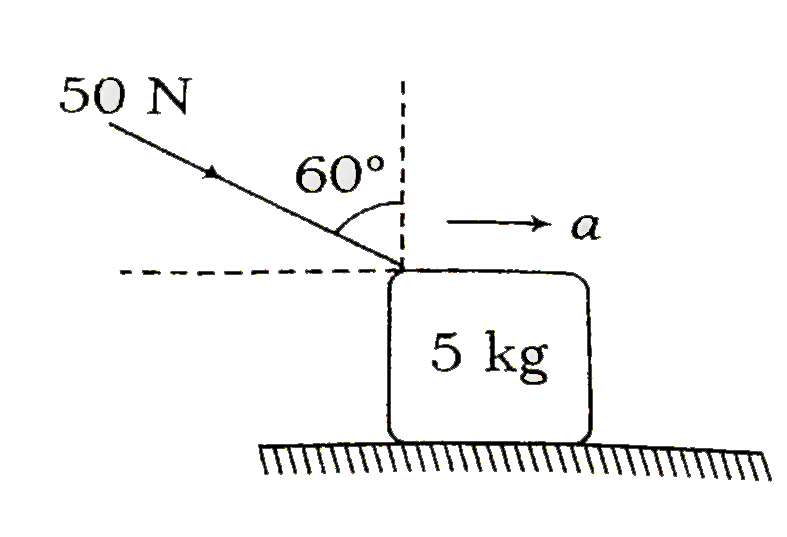
A hollow pipe of mass M=6kg rests on a plate of mass m=1.5kg . The thickness of the pipe is negligible. The coefficient of friction at all contacts is μ=0.2. The system is initially at rest. A horizontal force F of magnitude 25N is applied on the plate as shown in figure. Will the cylinder slide on the plate? Find the acceleration of the centre of the cylinder.
The correct Answer is:No, 109m/s2
Step by step video, text & image solution for A hollow pipe of mass M = 6 kg rests on a plate of mass m = 1.5 kg . The thickness of the pipe is negligible. The coefficient of friction at all contacts is mu = 0.2. The system is initially at rest. A horizontal force F of magnitude 25N is applied on the plate as shown in figure. Will the cylinder slide on the plate? Find the acceleration of the centre of the cylinder. by Physics experts to help you in doubts & scoring excellent marks in Class 11 exams.
Topper's Solved these Questions
Similar Questions
In the figure shown below , a block of mass 4 kg is attached to a spring constant 24 N/m . The coefficient og friction μ=0.5 . If the system is initially at rest and a constant horizontal force of 50 N is applied on the block , then calculate its speed when it is moved through a distance of 0.6 m .
 View Solution
View SolutionA horizontal force of 1.2kg is applied on a 1.5kg block, which rests on a horizontal surface If the coefficient of friction is 0.3 find the acceleration produced in the block.
View Solution
Knowledge Check
- Question 1 - Select One
A block A of mass 2 kg rests on another block B of mass 8 kg which rests on a horizontal floor. The coefficient of friction between A and B is 0.2 while that between B and floor is 0.5. when a horizontal force of 25 N is applied on the block B. the force of friction between A and B is
AzeroB3.9 NC5.0 ND49 N - Question 2 - Select One
A block A of mass 2kg rests on another block B of mass 8kg which rests on a horizontal floor. The coefficient of friction between A and B is 0.2 while that between B and floor is 0.5.When a horizontal floor F of 25N is applied on the block B the force of friction between A and B is
A3NB4NC2NDzero - Question 3 - Select One
A force of 50N acts in the direction as shown in figure. The block of mass 5kg, resting on a smooth horizontal surface. Find out the acceleration of the block.
 A5√3ms−2B2√3ms−2C15√3ms−2D3√3ms−2
A5√3ms−2B2√3ms−2C15√3ms−2D3√3ms−2
In Fig. 6-54, a slab of mass m1=40 kg rests on a frictionless floor, and a block of mass m2=12 kg rests on top of the slab. Between block and slab, the coefficient of static friction is 0.60, and the coefficient of kinetic friction is 0.40. A horizontal force →F of magnitude 120 N begins to pull directly on the block, as shown. In unit-vector notation, what are the resulting accelerations of (a) the block and (b) the slab?
 View Solution
View SolutionA force F is applied horizontally on mass m1 as shown in figure. Find the contact force between m1 and m2
 View Solution
View SolutionBlock of mass m rests on the plank B of mass 3m which is free to slide on a frictionless horizontal surface. The coefficient of friction between the block and plank is 0.2. If a horizontal force of magnitude 2 mg is applied to the plank B, the acceleration of A relative to the plank and relative to the ground respectively, are
 View Solution
View SolutionA horizontal force of 129.4 N is applied on a 10 kg block which rests on a horizontal surface. If the coefficient of friction is 0.3, the acceleration should be
View SolutionA block of mass 2kg is kept on the floor. The coefficient of static friction is 0.4 . If a force F of 2.5N is applied on the block as shown in the figure, the frictional force between the block and the floor will be.
 View Solution
View Solution

